QGradient¶
Inherited by: QConicalGradient, QRadialGradient, QLinearGradient
Synopsis¶
Functions¶
- def __eq__ (gradient)
- def __ne__ (other)
- def coordinateMode ()
- def interpolationMode ()
- def setColorAt (pos, color)
- def setCoordinateMode (mode)
- def setInterpolationMode (mode)
- def setSpread (spread)
- def setStops (stops)
- def spread ()
- def stops ()
- def type ()
Detailed Description¶
The PySide.QtGui.QGradient class is used in combination with PySide.QtGui.QBrush to specify gradient fills.
Qt currently supports three types of gradient fills:
- Linear gradients interpolate colors between start and end points.
- Simple radial gradients interpolate colors between a focal point and end points on a circle surrounding it.
- Extended radial gradients interpolate colors between a center and a focal circle.
- Conical gradients interpolate colors around a center point.
A gradient’s type can be retrieved using the PySide.QtGui.QGradient.type() function. Each of the types is represented by a subclass of PySide.QtGui.QGradient :
PySide.QtGui.QLinearGradient PySide.QtGui.QRadialGradient PySide.QtGui.QConicalGradient 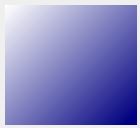
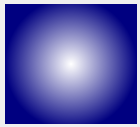
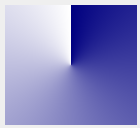
The colors in a gradient are defined using stop points of the QGradientStop type; i.e., a position and a color. Use the PySide.QtGui.QGradient.setColorAt() function to define a single stop point. Alternatively, use the PySide.QtGui.QGradient.setStops() function to define several stop points in one go. Note that the latter function replaces the current set of stop points.
It is the gradient’s complete set of stop points (accessible through the PySide.QtGui.QGradient.stops() function) that describes how the gradient area should be filled. If no stop points have been specified, a gradient of black at 0 to white at 1 is used.
A diagonal linear gradient from black at (100, 100) to white at (200, 200) could be specified like this:
linearGrad = QLinearGradient(QPointF(100, 100), QPointF(200, 200)) linearGrad.setColorAt(0, Qt.black) linearGrad.setColorAt(1, Qt.white)A gradient can have an arbitrary number of stop points. The following would create a radial gradient starting with red in the center, blue and then green on the edges:
radialGrad = QRadialGradient(QPointF(100, 100), 100) radialGrad.setColorAt(0, Qt.red) radialGrad.setColorAt(0.5, Qt.blue) radialGrad.setColorAt(1, Qt.green)It is possible to repeat or reflect the gradient outside its area by specifiying the spread method using the PySide.QtGui.QGradient.setSpread() function. The default is to pad the outside area with the color at the closest stop point. The currently set spread method can be retrieved using the PySide.QtGui.QGradient.spread() function. The QGradient.Spread enum defines three different methods:
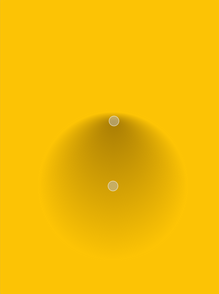
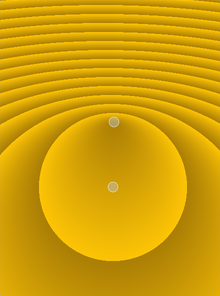
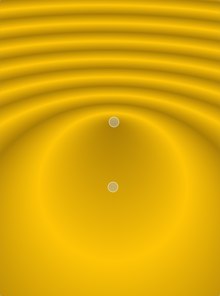
PadSpread RepeatSpread ReflectSpread Note that the PySide.QtGui.QGradient.setSpread() function only has effect for linear and radial gradients. The reason is that the conical gradient is closed by definition, i.e. the conical gradient fills the entire circle from 0 - 360 degrees, while the boundary of a radial or a linear gradient can be specified through its radius or final stop points, respectively.
The gradient coordinates can be specified in logical coordinates, relative to device coordinates, or relative to object bounding box coordinates. The coordinate mode can be set using the PySide.QtGui.QGradient.setCoordinateMode() function. The default is LogicalMode , where the gradient coordinates are specified in the same way as the object coordinates. To retrieve the currently set coordinate mode use PySide.QtGui.QGradient.coordinateMode() .
See also
The Gradients Demo PySide.QtGui.QBrush
- class PySide.QtGui.QGradient¶
- class PySide.QtGui.QGradient(QGradient)
Parameters: QGradient – PySide.QtGui.QGradient
- PySide.QtGui.QGradient.CoordinateMode¶
This enum specifies how gradient coordinates map to the paint device on which the gradient is used.
Constant Description QGradient.LogicalMode This is the default mode. The gradient coordinates are specified logical space just like the object coordinates. QGradient.StretchToDeviceMode In this mode the gradient coordinates are relative to the bounding rectangle of the paint device, with (0,0) in the top left corner, and (1,1) in the bottom right corner of the paint device. QGradient.ObjectBoundingMode In this mode the gradient coordinates are relative to the bounding rectangle of the object being drawn, with (0,0) in the top left corner, and (1,1) in the bottom right corner of the object’s bounding rectangle.
- PySide.QtGui.QGradient.Spread¶
Specifies how the area outside the gradient area should be filled.
Constant Description QGradient.PadSpread The area is filled with the closest stop color. This is the default. QGradient.RepeatSpread The gradient is repeated outside the gradient area. QGradient.ReflectSpread The gradient is reflected outside the gradient area.
- PySide.QtGui.QGradient.Type¶
Specifies the type of gradient.
Constant Description QGradient.LinearGradient Interpolates colors between start and end points ( PySide.QtGui.QLinearGradient ). QGradient.RadialGradient Interpolate colors between a focal point and end points on a circle surrounding it ( PySide.QtGui.QRadialGradient ). QGradient.ConicalGradient Interpolate colors around a center point ( PySide.QtGui.QConicalGradient ). QGradient.NoGradient No gradient is used. See also
- PySide.QtGui.QGradient.InterpolationMode¶
Constant Description QGradient.ComponentInterpolation The color components and the alpha component are independently linearly interpolated. QGradient.ColorInterpolation The colors are linearly interpolated in premultiplied color space.
- PySide.QtGui.QGradient.coordinateMode()¶
Return type: PySide.QtGui.QGradient.CoordinateMode Returns the coordinate mode of this gradient. The default mode is LogicalMode .
- PySide.QtGui.QGradient.interpolationMode()¶
Return type: PySide.QtGui.QGradient.InterpolationMode Returns the interpolation mode of this gradient. The default mode is ColorInterpolation .
- PySide.QtGui.QGradient.__ne__(other)¶
Parameters: other – PySide.QtGui.QGradient Return type: PySide.QtCore.bool Returns true if the gradient is the same as the other gradient specified; otherwise returns false.
See also
PySide.QtGui.QGradient.operator==()
- PySide.QtGui.QGradient.__eq__(gradient)¶
Parameters: gradient – PySide.QtGui.QGradient Return type: PySide.QtCore.bool Returns true if the gradient is the same as the other gradient specified; otherwise returns false.
See also
PySide.QtGui.QGradient.operator!=()
- PySide.QtGui.QGradient.setColorAt(pos, color)¶
Parameters: - pos – PySide.QtCore.qreal
- color – PySide.QtGui.QColor
Creates a stop point at the given position with the given color . The given position must be in the range 0 to 1.
- PySide.QtGui.QGradient.setCoordinateMode(mode)¶
Parameters: mode – PySide.QtGui.QGradient.CoordinateMode Sets the coordinate mode of this gradient to mode . The default mode is LogicalMode .
- PySide.QtGui.QGradient.setInterpolationMode(mode)¶
Parameters: mode – PySide.QtGui.QGradient.InterpolationMode Sets the interpolation mode of this gradient to mode . The default mode is ColorInterpolation .
- PySide.QtGui.QGradient.setSpread(spread)¶
Parameters: spread – PySide.QtGui.QGradient.Spread Specifies the spread method that should be used for this gradient.
Note that this function only has effect for linear and radial gradients.
See also
- PySide.QtGui.QGradient.setStops(stops)¶
Parameters: stops –
- PySide.QtGui.QGradient.spread()¶
Return type: PySide.QtGui.QGradient.Spread Returns the spread method use by this gradient. The default is PadSpread .
See also
- PySide.QtGui.QGradient.stops()¶
Return type: Returns the stop points for this gradient.
If no stop points have been specified, a gradient of black at 0 to white at 1 is used.
- PySide.QtGui.QGradient.type()¶
Return type: PySide.QtGui.QGradient.Type Returns the type of gradient.




